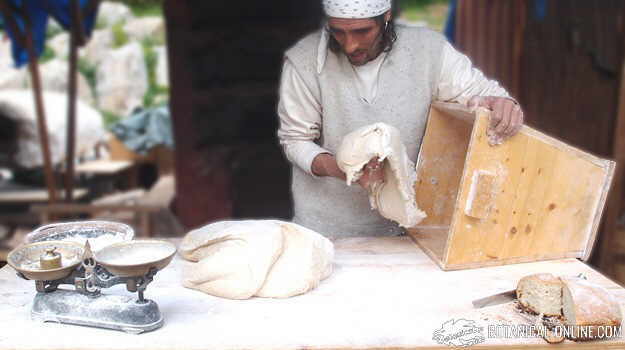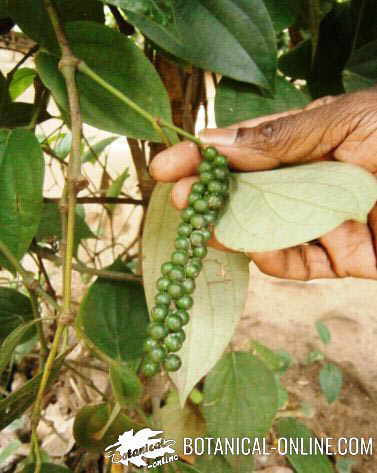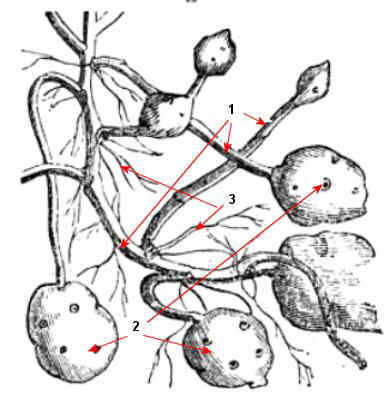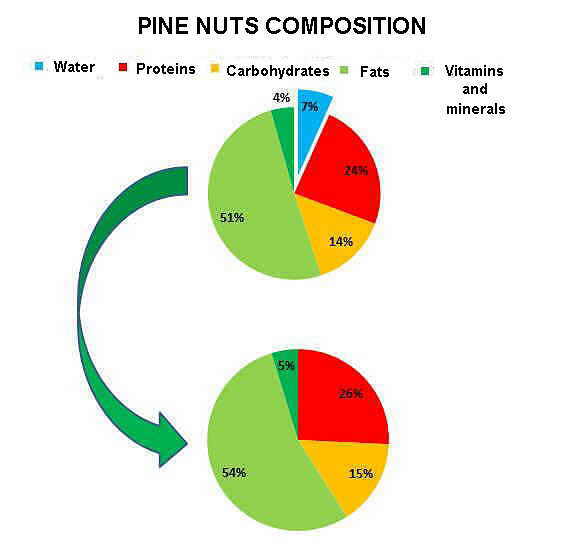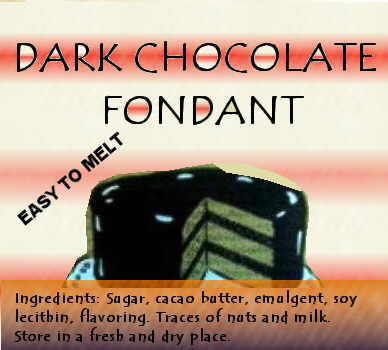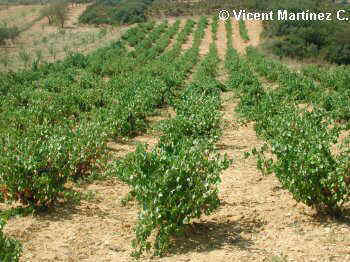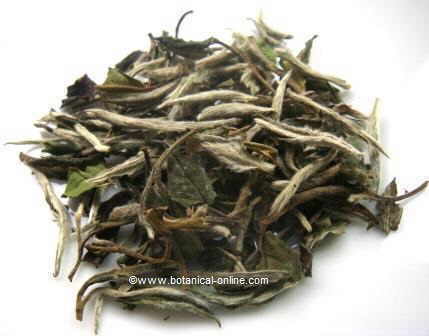Contents
What is a beech?
Beech characteristics
– Scientific name: Fagus sylvatica. The word fagus comes from the Greek “phegos” which, in turn, comes from the Greek word “phagein” (= eat). The reason for this name is because many parts of this tree, as we will see below, are edible and were widely used by ancient cultures.
The name of Sylvatica species comes from the Latin «silva» (= forest) since it is primarily a species that grows in the forest.
– Common English Name: European beech, Common beech, bog, boke.
– Family. Fagaceae
Description of the beech tree
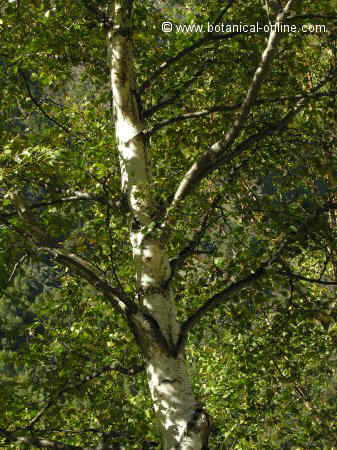
Deciduous tree of the Fagaceae family of up to 30 m of height, although some specimens can reach 40. Erect stems with smooth gray bark. Pointy and narrow reddish-brown buds.
Alternate, oval leaves, up to 9 cm long, with a wavy margin, without teeth, with a characteristic hairiness on the margins, especially when they are young and sometimes non-existent when ripe.
The leaves show a well-marked central nerve from which parallel lateral nerves are born. They are bright green above, without hairiness; lighter in color on the underside with the nerves showing an abundant silver-white hairiness.
Flowers separated on the same tree (monoecious tree). Male flowers are long-hairy and gathered in balloons with numerous stamens provided with yellow anthers. Female flowers gathered in groups of 1 to 3 in spikes on shorter peduncles.
Fruits in nut (beechnuts) between 1 and 2 cm in diameter. Gathered in groups of 1-3 inside The outer part is covered by a dome of papyrus texture and endowed with hardened filaments similar to blunt spikes. The dome has 4 leaflets that, when opened release the fruits
A tree with very hard wood
Beech wood is very hard and heavy. Its hardness is such that it was used in mining to make rails for the wagons before the cast iron was introduced.
It is yellowish in color that, over time, turns reddish to a dark reddish color. It is not very resistant to weathering humidity, so many of the objects produced in the past have not been preserved until today. (* More information on beech wood)
Where do beech trees grow?
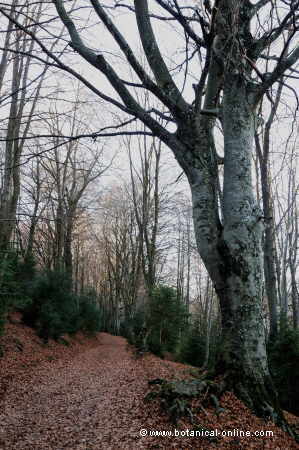
Beeches are European trees typical of temperate flat-leaf deciduous forests. Within this type of forest we find trees as characteristic as beech trees (Fagus), oaks (Quercus), birches (Betula) maples (Acer) etc.
It can be found from sea level in European countries with an Atlantic climate, being very abundant in France, Germany. Southern United Kingdom, and the Netherlands and all Central European countries including Northern Italy. The western half of Poland and western Ukraine would mark the eastern limit.
In other areas of Mediterranean influence it appears on mountain soils where rainfall is more abundant and the climate is milder.
Beech needs at least about 900 liters of annual rainfall to be able to develop, except in the Nordic countries where temperatures are less high and can do so with about 500 liters. Although in winter it resists temperatures of – 20 or – 30 ºC, the temperature differences during the day and night in vegetative season should not exceed 15ºC
(More information on the characteristics of beech trees)
Beech uses
Beech is a tree that has been widely used throughout the different cultures of Humanity. Among the main uses we could mention the following:
Beech as food for Man
The seeds, tender leaves and the oil extracted from the seeds are edible. All these parts of the beech were used in ancient times very abundantly.
The seeds, dried and roasted, are ground and a flour very rich in carbohydrates and proteins is formed with which cakes, cakes or other very nutritious and caloric preparations can be made. Let’s not forget that the beech grows in places with cold winters, so these seeds, once dried and roasted, could be stored and used in times when other foods were scarcer. (More information about properties of the hayucos in the listing below)
Beech as food for livestock
The leaves and fruits of beech have been one of the most commonly used wild foods in animal feed until industrial feed appeared.
The seeds of the beech are very rich in protein and vegetable oil so they are an ideal food for fattening pigs. In fact, some beech forests in central Europe were planted during the Middle Ages so that pigs could eat their fruits under these trees.
Sheep, goats and cows have also been fed with beech leaves since ancient times that are very rich in protein, carbohydrates and minerals.
Beech as food for wild animals
Many wild animals, and especially rodents, look for the source of food that provides them with energy in beech fruits. Squirrels are particularly interested in eating their fruits, as well as storing them in their dens to eat them in winter .
Beech as a book of knowledge
Beech wood is closely related in Europe with the appearance of writing. According to tradition, Germans wrote about the future by engraving on wooden tablets known as runes. It is believed that most of these engravings were made on beech wood.
Likewise, it seems that many manuscripts were made in Europe on beech wood slats. These were joined together by sewing them to give them the shape of what is currently known as a book.
All of this would explain why the word book is related to the word in Germanic languages. For example, in German “beech” is known as “buche” while “book” is “buch”. In Danish “bøg” means “beech” while book is “bog”. In English it is usually known as “beech” but popularly it is also known as “bog” or “boke”, words that are extremely similar to the word “book = book”
The same invention of the printing press seems to have an origin in beech wood. There is a belief that Gutemberg discovered how to print documents by chance: One day he engraved a letter on a piece of beech bark that he wrapped with paper. Later, another day, the paper opened, the contents of the letter engraved on the crust had been marked on the paper.
Beech as a Medicinal plant
The medicinal properties of beech were widely used in the past. It has been used primarily for the treatment of diarrhea, fever and to heal wounds.
![]() More information on beech
More information on beech

